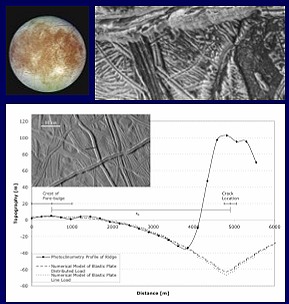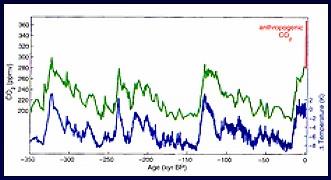
Planetary Geodynamics Laboratory
Two Columns
ORBITAL-ROTATIONAL-INTERACTIONS
Laboratory staff involved in ORBITAL-ROTATIONAL-INTERACTIONS studies

|

|
| David Rubincam |
Braulio Sanchez |
ORBITAL-ROTATIONAL-INTERACTIONS Research Examples

|
Ice cap loads deform a planet, changing how torques from other planets affect its obliquity (tilt). These can feed back into the climate system of Earth, Mars and other bodies (B. Bills, D. Rubincam) |

|
Studies of Yarkovsky effects on asteroid orbital evolution explain the delivery of small objects to near-Earth space (Rubincam). |

|
Accumulation of volatiles in polar regions may cause polar wander on Triton (Rubincam). |

|
A Mars Global Circulation Model helped compute atmospheric effects on the rotational dynamics of the planet (Sanchez). |

|
Loading models help explain the topography of some of the complex structures on Europa (T. Hurford). |

|
Yarkovsky effects on ring particles may explain ring boundaries and prevent long term stability (Rubincam). |

|
Fluctuations in insolation due to Earth's orbital and rotational motion may explain temperature variations over the past million years, perhaps causing observed changes in CO2 (Liu). |

|
Tidal dissipation on Mercury may keep the core molten, and help explain why Mercury still has a magnetic field today. (Bills) |
+ Home
